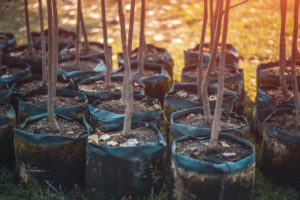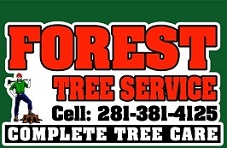
So—you’ve finally had that old, dying, or dangerous tree removed. The yard looks more open, maybe a little brighter… but also a bit empty. If you’re thinking about replanting in that same spot, you’re not alone. We get this question all the time at Forest Tree Service: “Can I plant a new tree where the old one was?”
The short answer? Yes—but there are a few things you’ll want to keep in mind before jumping in with a shovel.
The Ground Needs a Reset
After a tree is removed, especially a large one, what’s left behind isn’t always ideal for new growth. There’s often leftover root material in the soil, and if the stump wasn’t ground out, that can interfere with planting something new in the same spot.
On top of that, the soil itself might be tired. Think of it like this: your last tree was drawing nutrients from the ground for decades. That area might need a little help before it’s ready to support something new.
Here’s what we recommend:
- Grind the stump completely so the new tree’s roots don’t have to compete with old ones.
- Loosen the soil—compacted ground makes it hard for new roots to spread.
- Test and amend if needed. Sometimes a little compost or fresh topsoil can make a big difference.
Pick the Right Tree for the Right Spot
We love trees. But we’ve also seen what happens when the wrong one is planted in the wrong place. If the tree you removed had issues—like growing too close to your house, cracking the sidewalk, or blocking too much light—it’s worth rethinking your approach this time around.
Ask yourself:
- How big will this tree get? A sapling may look small now, but 20 years from now it could be massive.
- Is it the right species for this part of Texas? Some trees just handle the heat, humidity, and occasional storms better than others.
- What kind of look or benefit am I going for? Shade? Privacy? Fall color? Something low maintenance?
If you’re unsure, we’re happy to talk through options. After working in the Kingwood and Houston area for over 30 years, we know which trees do well here—and which ones tend to struggle.
Timing Is Everything
You can plant trees year-round, but that doesn’t mean you should. The ideal window for replanting in our area is fall through early spring. Cooler weather means less stress for the tree and a better chance of healthy root development.
That doesn’t mean you have to wait, though. If your tree was just removed in the middle of summer, you can use the time to prep the soil and plan. A little patience goes a long way when it comes to trees.
Think Big Picture
Replacing a tree isn’t just about plugging the hole it left behind—it’s also an opportunity to improve the overall look and feel of your yard. Maybe the old tree blocked sunlight to your garden, or maybe now’s your chance to try something ornamental and colorful.
You could even shift your thinking from “replacement” to “enhancement”—adding more than one tree, or planting something that fits your evolving outdoor space better.
We love helping homeowners dream up ideas that are both beautiful and practical. It’s what we do.
Leave the Planting to Us
Planting a tree might seem simple, but getting it right is more technical than you might think. Depth, spacing, root care, and water setup all play a role in how well that tree takes hold. We’ve seen plenty of trees planted just a little too deep—or with roots still balled up—and they often struggle to survive the first few seasons.
At Forest Tree Service, we make sure it’s done right from the start. We handle stump grinding, soil prep, planting, and even follow-up care if you need it.
Let’s Grow Something Great
Thinking about replanting after a recent removal? Give Forest Tree Service LLC a call at 281-381-4125. We’ll look, talk through your goals, and help you find the perfect tree to bring beauty (and maybe a little shade) back to your yard.
